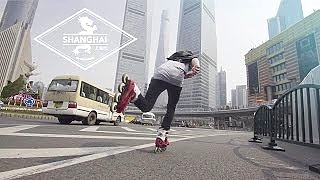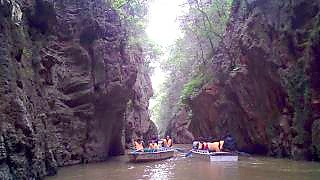
|
With DuckTravel ...
Welcome to ZhouZhuang
Discover the Venice of the East
About ZhouZhuang
ZhouZhuang, known as the "Venice of the East," is one of the most famous water towns in China. Located in Kunshan, Jiangsu province, it is renowned for its well-preserved ancient residential houses, elegant watery views, and profound cultural background. The town has a history of over 900 years and retains the style and pattern of its ancient past, with many houses built in the Ming and Qing Dynasties.
Attractions
Shuangqiao (Twin Bridges)
Shuangqiao, also known as the Twin Bridges, is the most famous site in ZhouZhuang. The two bridges, Shide Bridge and Yong'an Bridge, are connected at a right angle and have become a symbol of the town.
Fu'an Bridge
Fu'an Bridge, built in 1355, is an architectural gem with a unique combination of a bridge, tower, and pavilion. It offers a picturesque view of the waterways and houses.
Zhang House
The Zhang House, built in the Ming Dynasty, covers an area of over 1,800 square meters. It showcases classic Chinese residential architecture and beautifully decorated interiors.
Shen House
The Shen House, constructed in 1742, is another example of traditional Chinese architecture. It features 100 rooms and a garden, reflecting the life of a wealthy merchant family.
Local Food
ZhouZhuang is not only famous for its scenery but also for its delicious local food. Here are some must-try dishes:
Wansan Pork Hock: A famous dish named after the wealthy merchant Shen Wansan. The pork hock is braised to perfection with a rich, savory flavor.
Sanwei Glutinous Rice Balls: A traditional snack made from glutinous rice with sweet, salty, and spicy fillings, representing the three flavors.
Fish Delicacies: Freshwater fish dishes are a staple in ZhouZhuang, often cooked with local herbs and spices to enhance their natural flavors.
Transport
ZhouZhuang is easily accessible from major cities like Shanghai and Suzhou. Here are some ways to get there:
By Bus: Regular buses run from Shanghai and Suzhou to ZhouZhuang, taking about 1-2 hours.
By Car: You can drive from Shanghai to ZhouZhuang in about 1.5 hours. Parking is available at the entrance of the town.
By Tour: Many travel agencies offer day trips to ZhouZhuang, including transportation and guided tours.
|
 Incredible acrobatics
Incredible acrobatics



